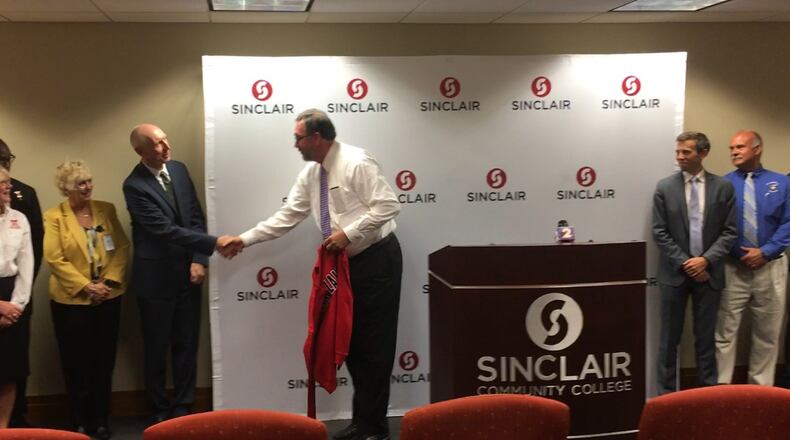RELATED: Dayton joins Boston, L.A., Denver as “talent hub”
The Dayton region was one of 17 communities nationwide designated Monday as a Talent Hub by the Lumina Foundation, for efforts to increase college access and attainment, as a way of “attracting, retaining, and cultivating talent.”
The award includes a $350,000 grant and will open doors for Dayton and Montgomery County to leverage more funding and “intellectual assets,” according to Tom Lasley, CEO of Learn to Earn Dayton.
“This is truly an all-community commitment to ensure that our young people are increasingly completing degrees, credentials, or are eligible for the military,” Lasley said Monday while flanked by representatives of UD, Wright State, Sinclair and more than a dozen local school districts. “And I can tell you, based on everyone standing up here, we are going to deliver on that promise, that more of our young people are going to succeed.”
RELATED: Degree-holders earn more; some cite debt risks
School district superintendents said there are a handful of obstacles they need to overcome to get more students to and through universities and career credential programs. Miamisburg Superintendent David Vail said schools need to do a better job of helping students understand what opportunities are available.
“They may or may not be aware of what’s in their reach,” Vail said. “Some students come from environments where (post-secondary education) is not a valued commodity. They may be the first in their family and not know what’s going on, and not have the push to do this.”
Dayton Public Schools Superintendent Rhonda Corr said key obstacles include the cost of higher education and better preparing K-12 students’ skills so that they are college and career-ready when they leave high school.
RELATED: Ohio ranks 45th of 50 states in college affordability
“Some of our children feel like they have to work, which is why we’re trying to offer more career tech programs in the high schools, so they can come out of high school with a good-paying job or use that to continue their education, with partners like Sinclair,” Corr said.
The talent hub program will aim to improve College Credit Plus access, college affordability efforts, financial aid application rates, summer bridge programs for new college students, and academic advising programs including “guided career pathways.” There are also efforts to reduce the number of non-credit-bearing developmental courses that new college students take, and to have “equity fellows” monitoring equality of opportunity.
The state of Ohio recently adopted a goal to have 65 percent of working-age residents hold a degree or valuable workforce credential by 2025. Today that number stands at 43 percent, affecting the state and region’s ability to attract and grow companies seeking a talented workforce.
About the Author

